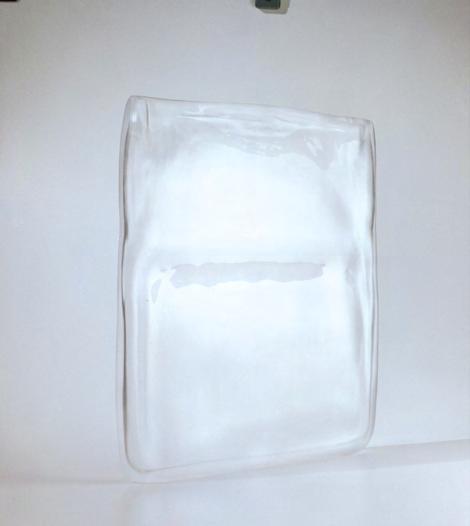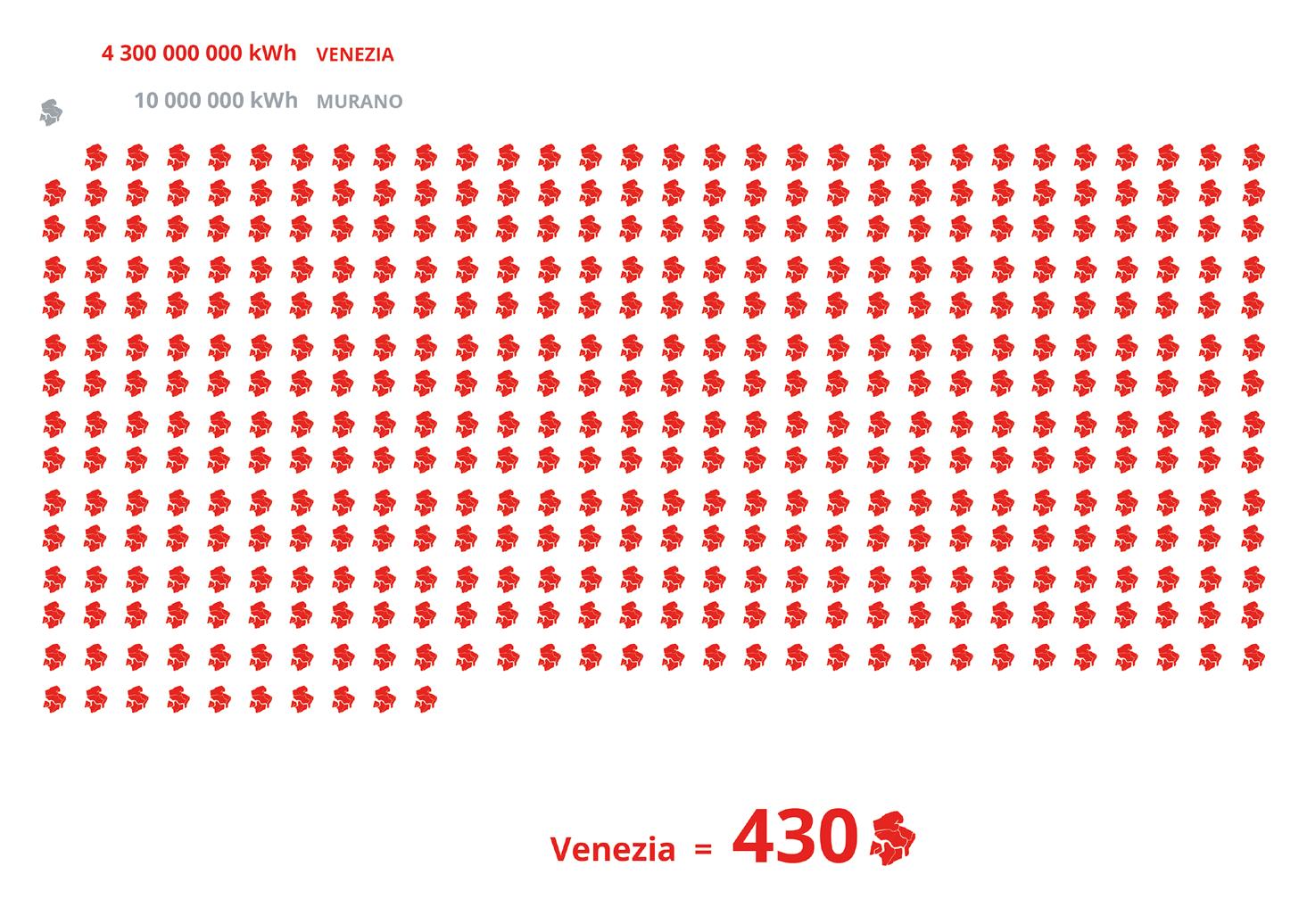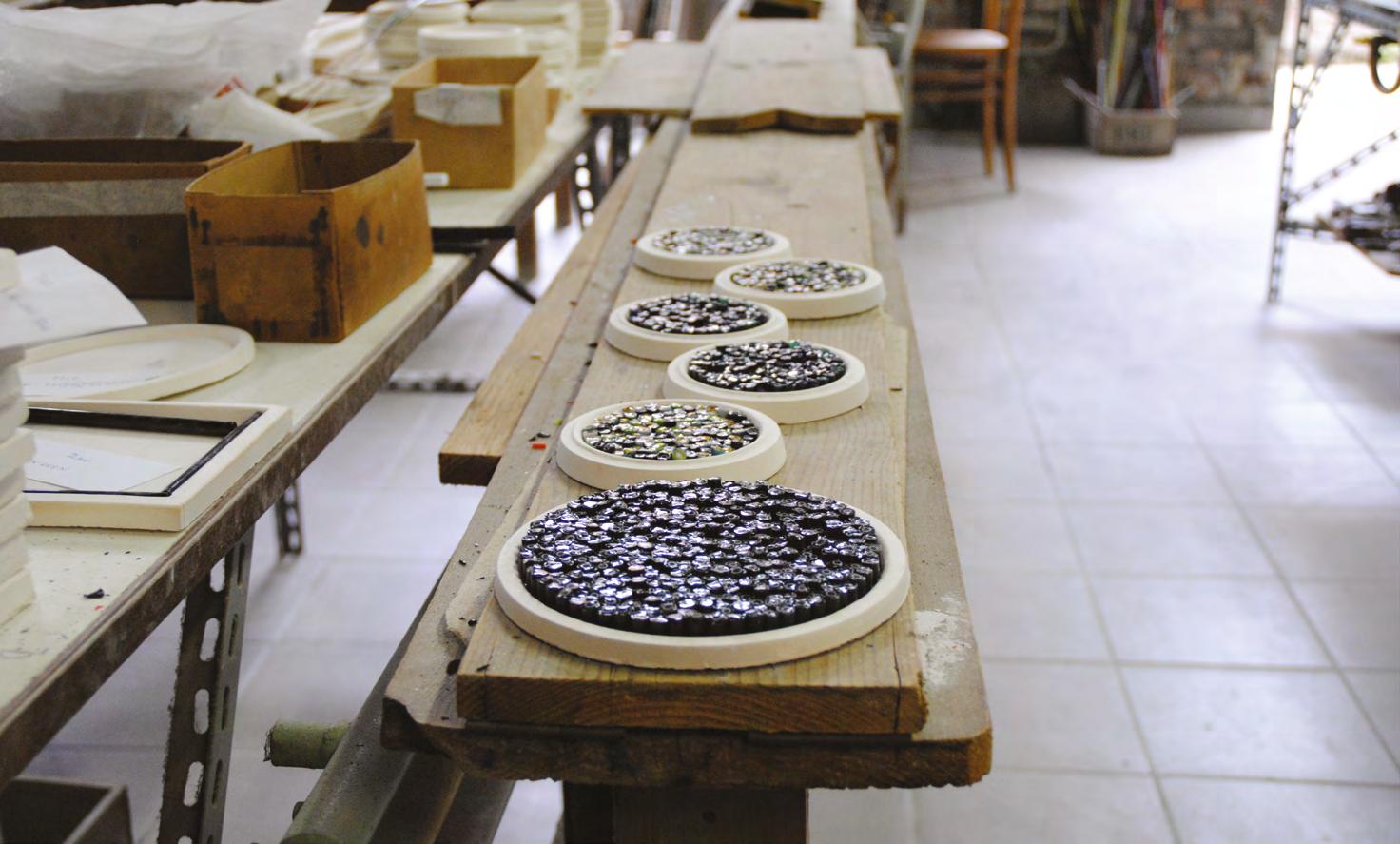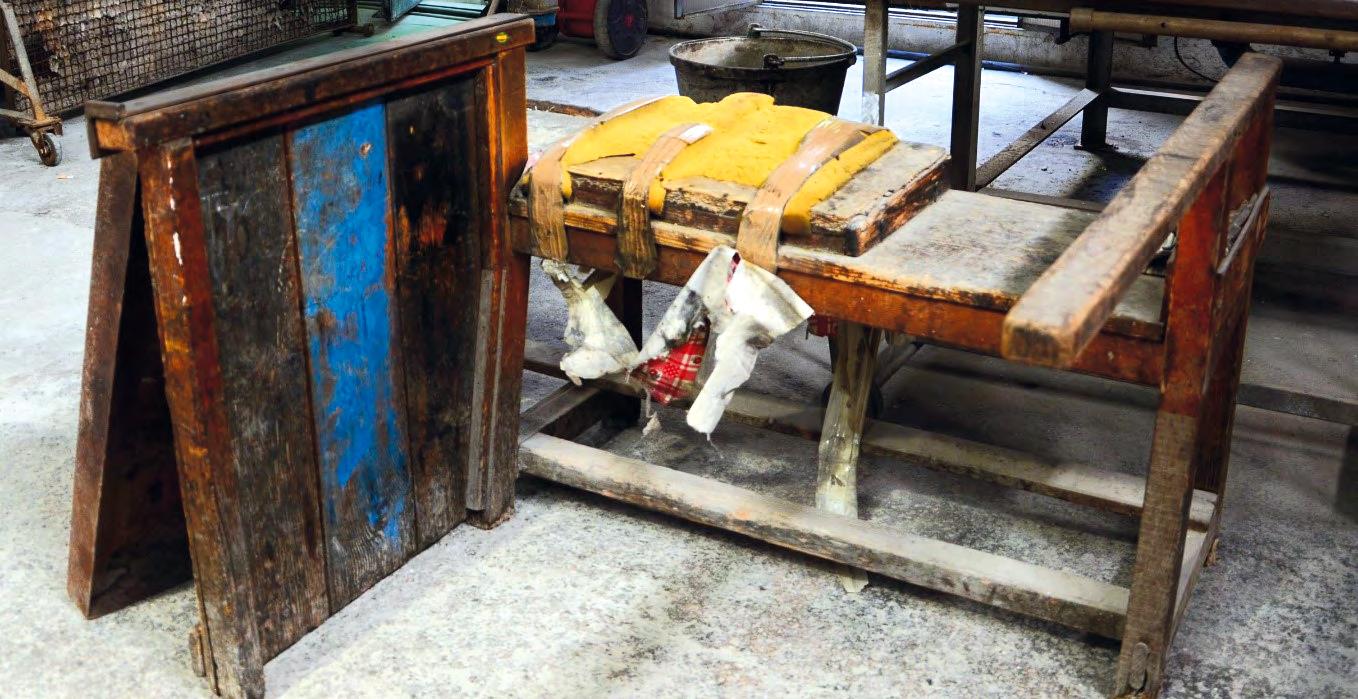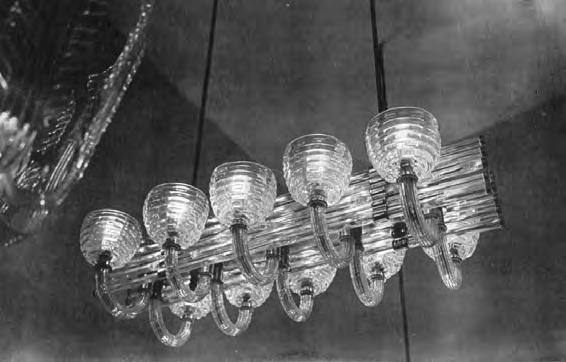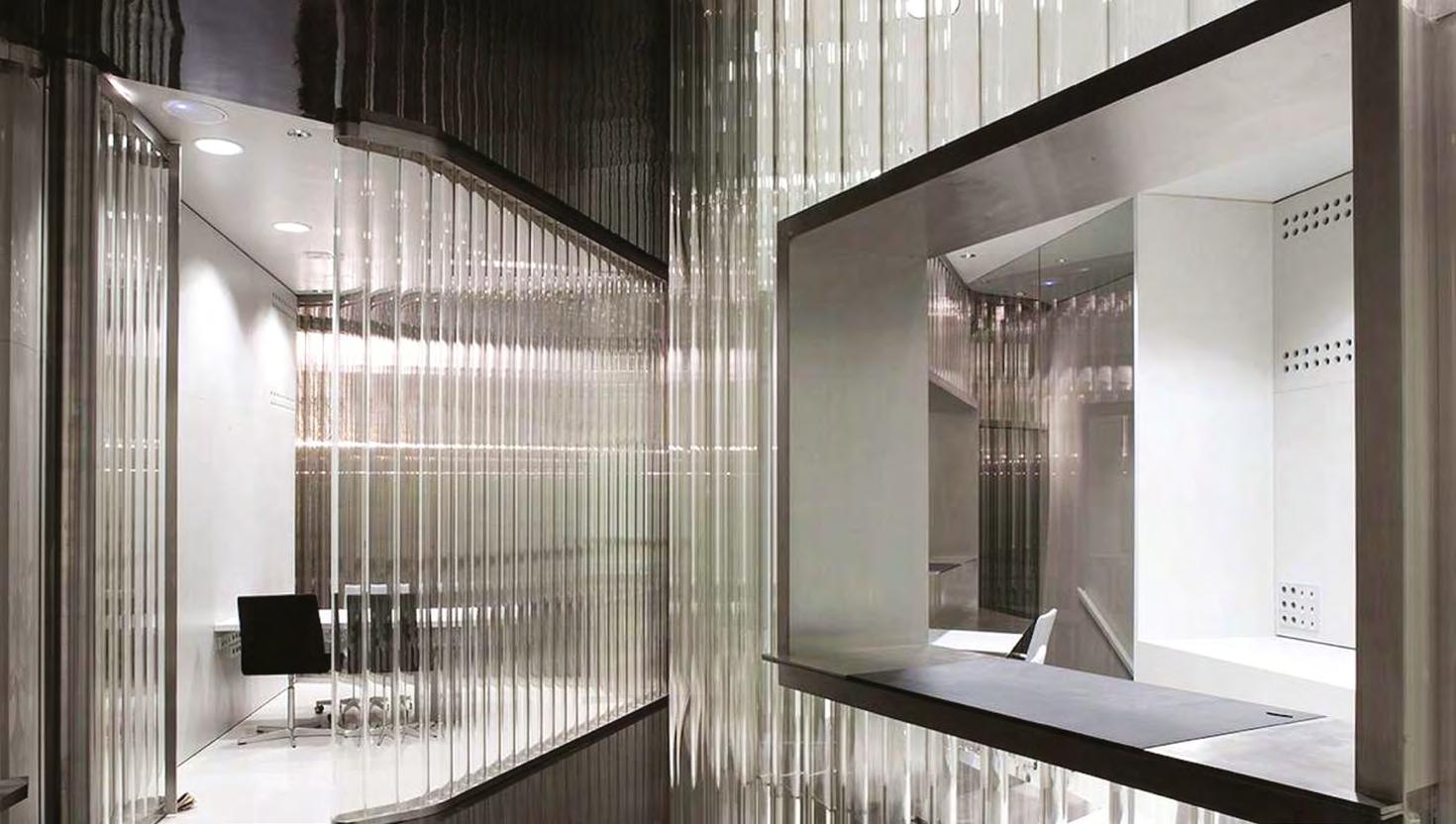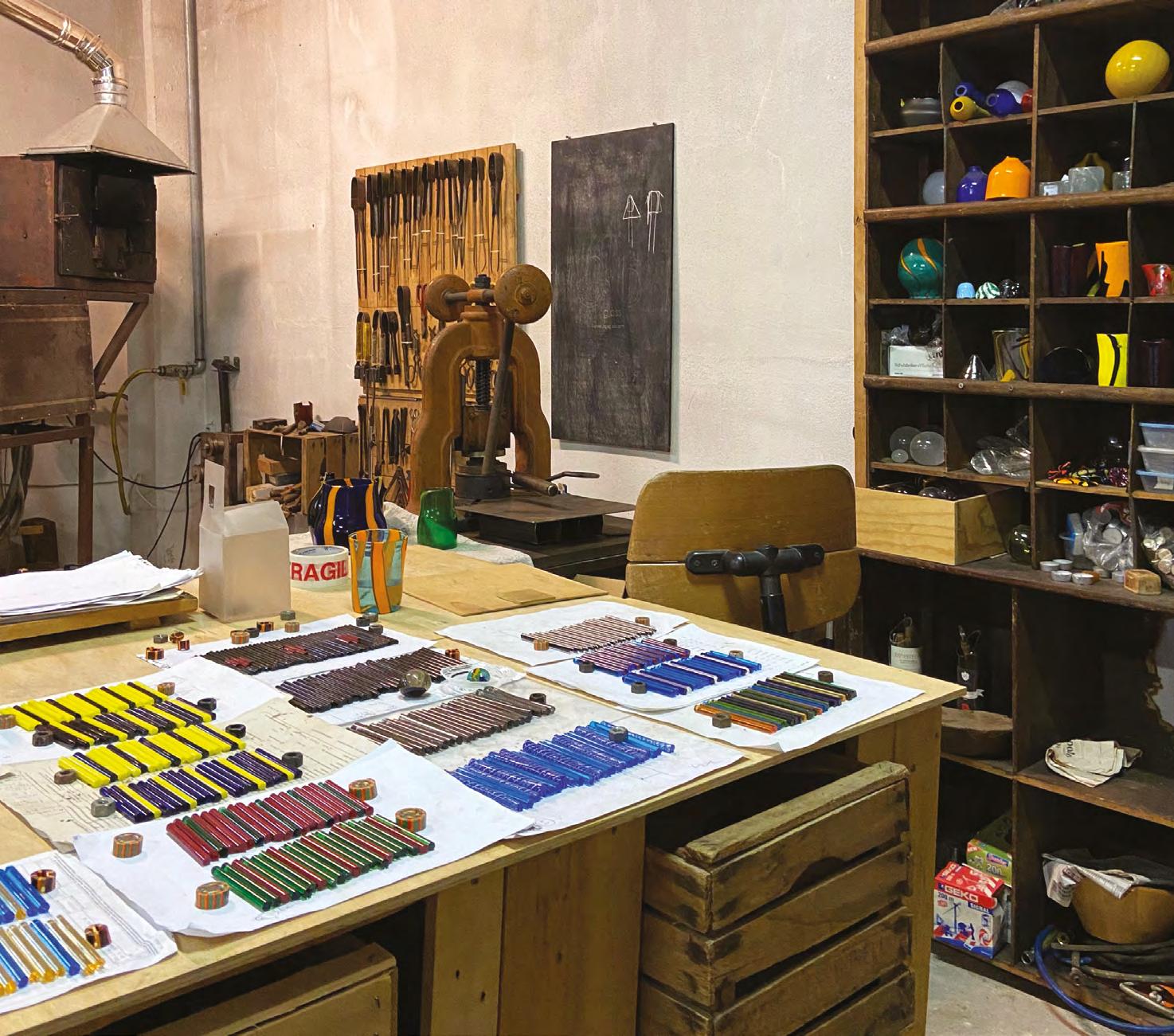
17 minute read
E)merging layers in Venice. The potential of one landscape and single raw material
MAXIMILIANO ROMEROA, ANNA LORENSB
KEYWORDS: ARCHITECTURE AND DESIGN, SUSTAINABILITY, NEW TECHNOLOGY
“The difference between past and present [...] is reflected in the fact that the past is experienced now. […] The individual layers of the city are those which uncovered appear as the indigenous and eternal substance of life, the unchanging pattern” (Rossi, 1984, p. 56). We always come across something, never nothing. Each place has its atmosphere and history. It is often magnificent and intense; other times, it may be initially elusive. But if we keep listening, sooner or later, every place will start talking. The place always dictates the result; we never try to impose something not rooted in it. In this way, we discover, interpret and add new stories to what already exists. Architecture always refers to nature even when nature is not noticeable. Present paper analyses, through the description of a didactic activity, the concept of Fragility at different layers, environmental, material, and relational. Based on a diverse design approach exemplified by the results of each team of workshop participants, he argues that glass is a resilient material, and this characteristic transforms its superficial fragility into innovative antifragility.
A Department of Design, Università Iuav di Venezia, Venice, Italy. B Division of Design and Theory of Architecture and Product Design, Faculty of Architecture, Warsaw University of Technology, Warsaw, Poland.
Introduction
Concerning its aesthetics, architecture and design find in the glass a method to achieve a sense of emptiness, absence, and pristine surfaces, both in the solid and in the properties of the material itself. In contemporary reality, on the other hand, there is an increasing need for an object to be resistant to changing conditions (both environmental and functional).
A building designed as a flawless sculpture no longer represents an ideal and timeless architecture. In line with the doctrine of circular economy, adaptability becomes necessary when defining basic guidelines for building design or finding ways to transform buildings. Demolishing and building from scratch are the least economical of the approaches. It is not a question of making sense of the space but of guaranteeing it for appropriate (variable!) functions that come to the fore in sustainable design. At the same time, buildings should benefit from the forces of nature (cooperating with wind and water) and be resilient to manifestations of ecological disaster – e.g., windstorms or seismic shocks. Thus, referring to the aspect of the fragility of glass, and thus the low susceptibility of glass façades to change, a significant influence on the flexibility (by definition of a rigid material) is the design of an appropriate structure that secures the material while maintaining its aesthetic qualities.
(Anti)Fragility
Early twentieth-Century modernism in architecture, the trend of minimalist manifest forms, treated glass as a material that contradicts and distracts from the underlying understanding of Heidegger’s premises for defining the architecture, namely- giving shelter.
In modernism, glass fostered an interpenetration of designed forms with the natural environment and a sense of openness to space. It was a way of avoiding adding superfluous masses by making them invisible. The perfection of form dominated its adaptability, for although the Bauhaus theory glorified the flexibility of use, any modification to a calculated, planned, and proportioned shape, from the point of view of the material’s properties (glass), exposes the fragility of beautiful transparent screens.
The aspect of perfection, which blocks adaptability, was pointed out by Lesang Dikgole when he wrote that “perfect shape introduces perfect fragility” (Dikgole, 2018). Any potential change of the designed volume in ideal proportions initially from the point of view of the designer’s vision (taking away a few centimeters from its height, reconstruction for a change of function, or adaptation to other needs) reveals the fragility of the material and prevents its flexibility.
A fascinating example, which symbolically can be taken as an expression
Fig. 01 Allatua by Lorenzo Damiani. internimagazini.com Fig. 02 Prada store in Tokyo. ssense.com

of irony towards the conditions, function, and context vs. aesthetics, is Prada Aoyama in Tokyo. Glass itself as a material is used here as in the scale of product design. In this case, the building is, as it were (and according to its commercial function), a ‘packaging for products’. Through such a partition, the contents can be shown based on transparency as an entire property of Glass. It is worth alluding to another scale, that of products precisely, to make this fantastic aesthetic property of Glass as a setting visible.
The incredible potential lies in the transparency of the glass. Transparency in architecture offers a view. In design: • it presents content and protects that content. The fragility of glass is therefore not so important here because the potential becomes the fact that the user knows how to use specific shapes, vessels, and flacons.
What’s more • the fragility and delicacy of glass make us handle the vessel more delicately and focus our attention on other senses.
“The Amalfi type – one of the most common “counter glasses in industrial production – and a classic tulip-shaped glass together so that even a simple wine may be presented and tasted at its best. And so, in this new shape, the glass cup becomes wider, and the rim narrows to emphasize colors and aromas. And the blow top blends with a solid base which welcomes opaque grindings and reveals the artisan’s touch” (Martinelli and Venezia, 2022).
This is how the Oste project by Carolina Martinelli and Vittorio Venezia (Martinelli Venezia) is characterized Glass, then is the setting for the content1 . The design aesthetic promotes the sensory experience of tasting wine and looking at it in a feasting arrangement. Just as in product design, we acquire a collector’s item, where the nobility of the material offers a ritual not only visually but also related to smell, touch or taste.
In the case of Prada’s architectural design – the transparency of the glass works both ways, depending on the user’s perspective. Glass – synonymous with nobility and luxury (also due to its natural delicacy), became the
1 An exhibition Forme del Bere, Martinelli and Venezia (2022), at Galeria Art Gallery – Punta Conterie, Murano, Italy.
primary façade filler material of the Prada flagship store. Since the task was to develop a flagship store in Tokyo, in a cramped development, without the possibility of taking advantage of extensive views from the interior or displaying the product from different angles, they designed the building like a product package, inserted and crumpled according to the conditions of the plot. The glass provides an outer shell, compared in the literature to the contact lens of the pupil of the eye, changing the angle of vision and creating an illusion; in this scale of application somewhat in pop culture expression.
However, the plot is exposed to seismic shocks; the glass material is protected by a structure placed on a suitable base. Although structural engineering experts accuse the project of being shaped more by aesthetic considerations than by the overall system’s efficiency, it is noteworthy for the groundbreaking (now over 20 years old) design of the façade. It is a selfsupporting structure, and a grid for the glazing and the aspect of the fragility of the material is irrelevant in this modulated arrangement.
Research conditions of a plot intended for an object with a specific function allow this material to be protected as design intention. Given the interdisciplinary boundaries of architecture, similar design treatments are applied on a smaller scale. The material’s formation, texture, and function in an appropriate aesthetic setting that refers to certain traditions mean that the user treated glass with more outstanding care due to its fragile and sensitive nature.
Thus was Lorenzo Damiani’s design for Allatua, a Murano glass beer mug presented in an exhibition curated by Elisa Testori at Punta Conterie on Murano2. The glass of the cup is banded with a specially designed clamp supporting a wooden cube. In a toasting gesture, these cubes are placed opposite each other on the two tankards in those places. The designer draws attention to the value of glass by depriving the motion of clinking the tankards of the characteristic sound that usually accompanies the successive breaking of fragile glass. He juxtaposes the pop culture clumsy feasting gesture with the nobility of Murano glass and the values contained in the material, the ritual of coming together, and attentiveness.
“A beer mug that plays on the one hand with the idea habits and rituals that identify the classic Bavarian mug (this is the shape of the stein – author’s note) and the precious and extremely delicate Murano artifacts on the other. Allatua is an ironic project that encourages the typical thunderous Prosit! gesture but with an adequate measure of protection for the glass: a customized bumper, distinctly Venetian, made with bricole3 wood offered by the lagoon and patiently handcrafted” (2022 Damiani exhibition).
Such respect for the material can paradoxically affect its durability
2 An exhibition Forme del Bere, Damiani (2022), at Galeria Art Gallery – Punta Conterie, Murano, Italy. 3 Bricole – specific indicators of Venice lagoon – structures formed of two or three wooden pales.
(antifragility). Noteworthy, the glass, apart from being fragile, is also – on the contrary – very resistant to the passage of time, and the differences resulting from the randomness of the material’s behavior in processing lend a singular, collectible character. From an environmental and sustainability point of view, leaving a product in circulation for as long as possible and designing it so that the object gains in value over time is the most ecological approach. At the same time, the time of use creates valuable stories around the thing and creates a specific message to the user – respect the material, protect it, care for it, and create a new definition of heritage.
The workshop, curated by Prof Maximiliano Romero and co-led as a guest at Università Iuav di Venezia by Prof. Anna Lorens (hereafter co-authors of this article), was born out of the need to prove that landscape heritage and material (glass) are antifragile.
On field research
In the Venetian lagoon, glass has been an important commercial resource for many years. The Murano glass factory is recognized all over the world for the quality of its production, but at the same time it has an important impact on the fragile lagoon environment.
The glassworks of Murano have been, and still are, one of the causes of environmental pollution of the Venetian Lagoon, primarily via atmospheric

Fig. 03 “Glass cemetery”, R. Tremazi
emissions but also as a result of effluent discharges and disposal of solid waste. A preliminary ecological audit of Murano’s glassworks in 1999 indicated that the local entrepreneurs see adopting environmental management systems and pollution-prevention/reduction measures as a significant burden. The main reasons are: • the costs that must be borne; • the complexities of Italian legislation and regulation; • the relatively small size of the majority of the units operating on this island.
Pollution-control and waste-minimization strategies are slowly being implemented due to regulatory pressures (Giusti and Polo, 2002).
With the aim of feeling the impact of the glass industry in the lagoon environment, the workshop participants visited not only the glassworks, but also the closest areas. The student’s group visited the area north of Murano Island, on the landfill unofficially known as “Glass cemetery” because, in the past decades, the site was used illegally for glass production waste recovery. The ground of a section of the island is made up of layers of waste glass – a testimony to the heritage of this craft.
Expert’s support
For the realization of the activity, some glass experts, both in their workshops or factories and online.
Mr. Matteo Silverio presents online his expertise in 3D printing technologies for glass powder. Silverio’s innovative technology is based on a substance developed by himself that gluconate glass powder can be deposited through a CNC-controlled extruder. This additive manufacturing process allows the production of pieces created by CAD software. The technology of arch. Silverio is reflected in particular projects.
Nicola Moretti introduces us to processing and creating glass molds (hot glass molding, them breaking, glass blowing), the parameters and equipment, and the craftsman’s involvement in shaping the individual molds.
He also provided a lot of valuable practical information related to the ins and outs of the technology, especially concerning the coloring of the glass material and the impossibility of combining dyes – as the essential ingredient testifying to the uniqueness of a product made in a particular workshop.
Simone Cenedese explained how a glass manufacturer works on a larger scale and how new concepts and prototyping are implemented in a much larger-scale plant. In addition the creation of traditional Murano chandeliers, the bending of glass molds, and the potential inherent in thermally transformed glass molding had been shown. Teams had the opportunity to discuss glass fusing, decorating, and polishing options.
Group 1_ W.W.V. (Waste. Wall. Venice)4
“A person with a pattern language does not need to be an expert. The expertise is in the language. He/she can contribute to planning and design because they know relevant patterns, how to combine them, and how the particular piece fits into the larger whole” (Alexander et al., 1977, p. 18).
The selected area where it was decided to work, is located in the northeastern part of the landfill. It is located at the most extreme point of Sacca S. Mattia, a place now a waste repository of all kinds. The main reason this area has been chosen is its strong visibility from the sea and the shore of the island of Murano.
The goal is to redevelop the area, using waste materials and through the project, involve the community and encourage interaction between the inhabitants of the island.
This process of shaping the design process essentially resumes what the most specific character of the identified area is. The central premise of the idea was to revitalize the area by creatively retraining it and making it easily recognizable and identifiable to users. The process involved redefining (deforming and forming the shape of the traditional brick), creating a new organic and modular object allowing for easy, intuitive combinations of different modules, making it possible to create new configurations and unique shapes with functional characteristics – from seating to small-scale architecture – partitioning (Figure 04). The idea is based on a reference to local communities, both in the glass ‘brick’ production process and in the strategy of building objects from it according to demand.
Group 2_ Furniture of the Landscape5
“Memory’s images, once they are fixed in words, are erased,” Polo said. “Perhaps I am afraid of losing Venice all at once, if I speak of it, or perhaps, speaking of other cities, I have already lost it, little by little” (Italo Calvino, 1978, p. 87).
The project is based on the values embodied in the site’s history and aims to link the material (manufacturing waste) to the unique character of Murano terrain vague. The function of the urban furniture/object is to generate interaction among users, a place to rest and reflect. The design intention was to reflect the historical tradition of glass production in Murano. Accordingly, the chair was made from damaged crucibles (Figure 05), used in the furnace supply chain. The project’s authors saw extraordinary potential in the aesthetic appeal of the waste from production – a crucible covered
4 Ferrulli F., Melato F., Tremazzi R. (students from Iuav Venezia), Krzysiek K. (student from WUoT Warsaw). 5 Coriele F., D’Amato S., Mescolin M. (students from Iuav Venezia), Wyszynski K. (stud. WUoT Warsaw).
with layers of glass. “Layeredness” – both contained in the landscape (the observation that the “Glass Cemetery” is somehow made of glass material accumulated over the years) but also in the object itself, covered with layers of glass in the production process.
This juxtaposition became the basis of the project idea. It became the designer’s role to search for the ideal ‘cut’ and to counteract the fragility of the glass in the cutting process and technology, to give a completely new value to the crucibles. The final representation of the thoughts and observations is an object meant to reproduce a specific situation: a chair seems to be the most appropriate solution. The design also intends to reflect the history of glass production in Murano. Accordingly, making the chair from damaged crucibles used in the furnace supply chain. This is shown in the drawings and diagrams.



Fig. 04 W.W.V. (Waste. Wall. Venice): visualization of the concept. Fig. 05 Furniture of the Landscape: visualization of the concept
Group 3_Landleidoscope6
The project’s idea was based on observing the constraints and limitations in designing an object out of the material glass. One of the main observations made during a site visit to the Moretti glass manufactory was that specific colors of glass are a manufacturer’s secret and cannot technically be combined except by glue. The defragmentation of the colors of the glass elements became a method of proving that it is possible, through design, to achieve the combination or overlapping of colors differently – namely spatially. The designers observed that the characteristic feature of this place is the feeling of separation – physical – water from land, permanent from temporary, but also symbolic – break from the tourist hustle and bustle, a sense of alienation, ‘defragmentation’.
Small scale architectural forms – a kind of glass tepee – have been created, referring to creating a sub-space in the open area for the user. Thanks to the stained-glass method, the structure, like a colored patchwork, allows us to achieve the effect we can observe in a kaleidoscope – the superimposition of colors and shapes.
Results and conclusion7
The workshop lasted only five days, including two days for study visits to Murano island: the pot and two factories. Participants also had two lectures from Prof. Lorens and Prof. Silverio. A complexity/richness of the activity was the participation of 3 students from Warsaw University of Technology (one for each group). As a result, only a few hours have been used by students to produce results. Described activity was, since the beginning, conceived as a test to be improved.
The experimental workshop showed that research should be based on following the material processing, recognizing the technology and technological possibilities. We made scale prototypes at Iuav in the laboratory using a 3d printer from the plastic filament to identify form and shape specificity. The workshop attempted to prove the potential for innovation in the use (redefinition) of glass in design practice. The goal was to fluctuate the material characteristics (fragility and potential for recovery) with dedication (landscape). The fragility of glass can be a technological potential (in the sense of physical property) and aesthetic/symbolic. In line with the doctrine
6 Grossa E., Calamante M., Solofrano L. (students from Iuav Venezia), Barnaś A. (student from WUoT Warsaw). 7 Authors want to thanks students for their participation, and in particular to Lucrezia Solofrano and Fabio Ferrulli for the collaboration into organizing the WS, Prof. Rosa Chiesa for her scientific support, Mr. Matteo Silverio, Mr. Luca Nichetto and Mr. Dario Stellon for organizing Murano Glass Producers visits, Simone Cenedese and Nicola Moretti for to received us in their workshops and give us the opportunity of to know in details their technical and philosophical approach to the Murano Glass.
of sustainability, the material is perfectly suitable for reuse: • from waste glass using the printing technology developed and patented by Matteo Silverio as well as according to traditional Murano craft techniques (Group no. 1); • based on the potential of the object’s form, which is both a matrix and consequently a waste product to give it a new lease of life in line with circularity Furniture of the Landscape (Group no. 2); • the potential of the degraded landscape- terrain vague of the “Glass
Cemetery” (Group no. 3).
All the results have been finally presented in a small exhibition, and participants described their experiences to the general public. From the participant’s point of view, visiting the landscape and factories was very inspiring, and all of them appreciated the international composition of the teams.
References
Alexander, C., Ishikawa, S., Silverstein, M. (1977). A Pattern Language: towns, buildings, construction. New York: Oxford University Press. Calvino, I. (1978). Invisible Cities HMH Books; Bilingual. Dikgole, L. (2018). Bauhaus fragility: an assessment of architecture in buildings and information systems (online). In: https:// vincentlesang.medium.com/bauhaus-fragility-an-assessment-of-architecture-in-buildings-and-information-systems-4e0b5533d2b3 Giusti, L., Polo, M.C. (2002). A review of the glass-making industry of Murano (Venice, Italy) under an environmental perspective. Environmental Management and Health, vol. 13, n. 1, pp. 40-54. Rossi, A. (1984). The Architecture of the City. Boston: The MIT Press. Testori, E. (2022). Forme del Bere - Exhibition. Galleria Art Galerie, Puntaconterier, Murano.

